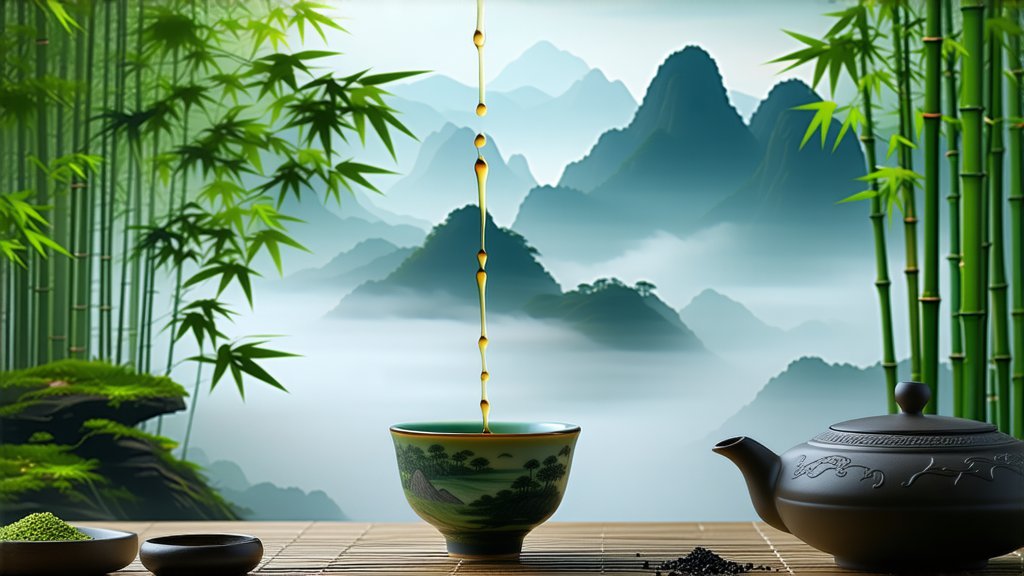
China, the cradle of tea culture, boasts a rich tapestry of tea varieties that have been cherished for centuries. Among these, yellow tea stands out as a unique and lesser-known gem, often overshadowed by its more popular counterparts like green and black teas. In this exploration, we delve into the world of Junshan Yinzhen, one of the most revered yellow tea varieties, to uncover its history, types, production process, and the art of its appreciation.
A Brief History of Junshan Yinzhen
Junshan Yinzhen, also known as Junshan Silver Needle, hails from the pristine slopes of Junshan Mountain in Hunan Province, China. Its origins can be traced back to the Tang Dynasty (618-907 AD), making it a tea with a storied past spanning over a thousand years. Legend has it that the tea was discovered by a local farmer who noticed wild tea plants growing on the mountainside, their tender shoots resembling silver needles. These shoots were carefully harvested and processed, resulting in a tea that exuded a delicate aroma and possessed healing properties. Over time, Junshan Yinzhen gained popularity among scholars, poets, and emperors alike, becoming a symbol of refinement and elegance.
Types of Junshan Yinzhen
While Junshan Yinzhen primarily refers to the yellow tea produced from the specific region of Junshan Mountain, there are subtle variations within this category based on the grade and quality of the leaves used. The highest grade, known as "Yinzhen," consists solely of the bud, devoid of any stems or leaves. This grade is highly prized for its exceptional purity and flavor profile. Lower grades may include one or two young leaves along with the bud, offering a more robust taste while still maintaining the characteristic qualities of Junshan Yinzhen.
The Art of Junshan Yinzhen Production
The production of Junshan Yinzhen is an intricate process that requires meticulous attention to detail, much like crafting a fine piece of art. Here’s a glimpse into the steps involved:
-
Plucking: The journey begins with the careful hand-picking of only the topmost buds before they fully open into leaves. This is typically done in early spring when the buds are at their freshest and most nutrient-rich.
-
Withering: The freshly plucked buds are spread out thinly on bamboo mats under shade, allowing them to wither naturally. This step reduces moisture content and initiates enzymatic reactions that contribute to the tea’s unique color and flavor.
-
Fixation: Once the buds have withered sufficiently, they undergo a gentle steaming or pan-frying process to halt oxidation and preserve their vibrant yellow hue. This step also helps develop the tea’s distinctive aroma.
-
Dehumidification: After fixation, the buds are placed in a warm environment to remove excess moisture, further concentrating their flavors.
-
Rolling and Shaping: Unlike other teas that may be rolled tightly, Junshan Yinzhen maintains its straight, needle-like shape throughout the process. Gentle rolling helps release additional flavors without compromising the integrity of the bud.
-
Drying: Finally, the tea is slowly dried using low heat to ensure a perfect balance between moisture retention and flavor development.
Each stage of this process is carried out with precision, ensuring that every batch of Junshan Yinzhen embodies the essence of its terroir and tradition.
The Appreciation of Junshan Yinzhen
To truly appreciate Junshan Yinzhen, one must engage in the art of tea tasting, or "nosing" and "sipping," which transcends mere consumption and becomes a mindful experience. Here’s how to embark on this sensory journey:
-
Preparation: Begin by selecting a transparent glass or a white porcelain cup to fully appreciate the tea’s color and unfurling buds. Use water heated to around 80-85°C (176-185°F) to avoid scalding the delicate leaves.
-
Infusion: Place approximately 2 grams of Junshan Yinzhen per 150ml of water. As the tea steeps, observe the buds gracefully sinking and gradually releasing their golden essence. A short steeping time of 1-2 minutes is recommended for the first infusion to capture the tea’s freshness and subtlety.
-
Observation: Notice the tea’s bright yellow liquor, a testament to its unique processing method. The aroma should be sweet, floral, and slightly fruity, inviting you into its world.
-
Tasting: Take your first sip slowly, allowing the tea to coat your palate. Junshan Yinzhen offers a smooth, mellow taste with hints of honey, apricot, and a whisper of chestnut. Its aftertaste is long-lasting and cleansing, leaving a refreshing sensation in your mouth.
-
Multiple Infusions: Junshan Yinzhen is known for its endurance; subsequent infusions reveal different facets of its character, from lighter and more fragrant to deeper and more complex as the leaves unfurl completely. Each brew offers a new dimension to explore.
In conclusion, Junshan Yinzhen is not just a beverage; it’s a cultural artifact that encapsulates the wisdom of ancient tea makers and the harmony between man and nature. Its production is a testament to the artistry and dedication inherent in Chinese tea culture, while its consumption invites us to slow down, savor the present moment, and connect with a legacy that spans millennia. Next time you raise a cup of Junshan Yinzhen, let it be a reminder of the beauty found in simplicity and the stories waiting to be discovered in every sip.